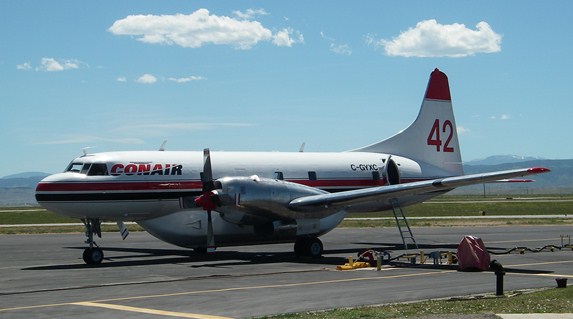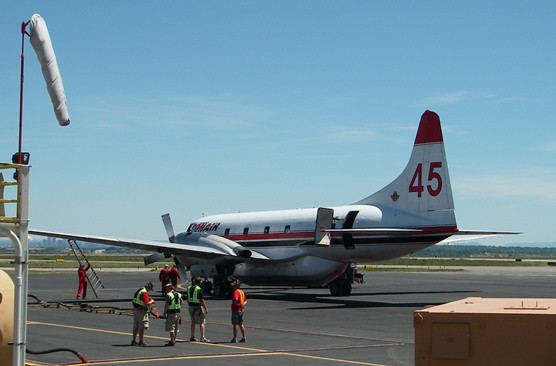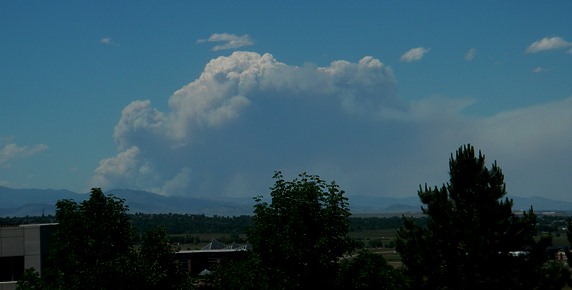
The U.S. Forest Service has activated the Call When Needed contract for one of the DC-10 Very Large Air Tankers and has also called in three more air tankers from Canada, CV-580s borrowed from the Canadian Interagency Forest Fire Centre. The DC-10 carries 11,600 gallons of retardant, five times more than the CV-580 which holds a maximum of 2,100 gallons.
The CV-580s are modified Convair CV-340 or CV-440 aircraft manufactured between 1947 and 1954 which have had the piston engines replaced by turbo-props.
On June 6 the USFS announced they were borrowing two CV-580s, and they have been working on the High Park fire in Colorado, reloading at the Rocky Mountain Metro Airport. Now there are a total of five CV-580s temporarily in the lower 48 states; one borrowed from the state of Alaska and four from the Canadian Interagency Forest Fire Centre. Those five plus the DC-10 which may be hired for only a short time as well, bring the total of large air tankers under the control of the USFS, counting two S-2Ts, to 17 — for now.
CAL FIRE recently reached out to the USFS and allowed the federal agency to arrange to bring on two S-2T CAL FIRE air tankers one month earlier than they would have come on duty otherwise. These two aircraft will only be used in California. An S-2T carries 1,200 gallons of retardant, 10% of the capacity of a DC-10.
To summarize the current 17 large or very large air tankers that are currently available:
- eight P2Vs (exclusive use contract)
- one BAe-146 (exclusive use contract)
- five CV-580s (borrowed temporarily from Alaska & Canada)
- one DC-10 (brought on with “Call When Needed” contract)
- two S-2Ts (in California only, brought on 1 month early)
We talked with Rick Hatton of 10 Tanker Air Carrier who told us that one of their DC-10s, Tanker 911, will be airborne this afternoon en route to Phoenix and will be available there for fire duty tomorrow, Tuesday. Only one of their two DC-10s is on a CWN contract, since it is not economically feasible for them to have two large expensive airplanes with crews available, when there is no guarantee that either will be used. Mr. Hatton is hopeful that both will receive exclusive use contracts when the USFS’s “next-gen” contracts are announced. That announcement was expected in May.
A Call When Needed contract can fit into the business model of the owner of a helicopter nicely, if their main source of earning income is passenger transport, TV news and traffic reporting, agricultural spraying, construction, or other uses. But an air tanker is a huge investment for a piece of equipment that is single-use; dropping retardant on wildfires. If they are not used for that, they sit, earning nothing, while the pilots and mechanics may sit too, but might still be earning a salary. That can’t go on forever.





